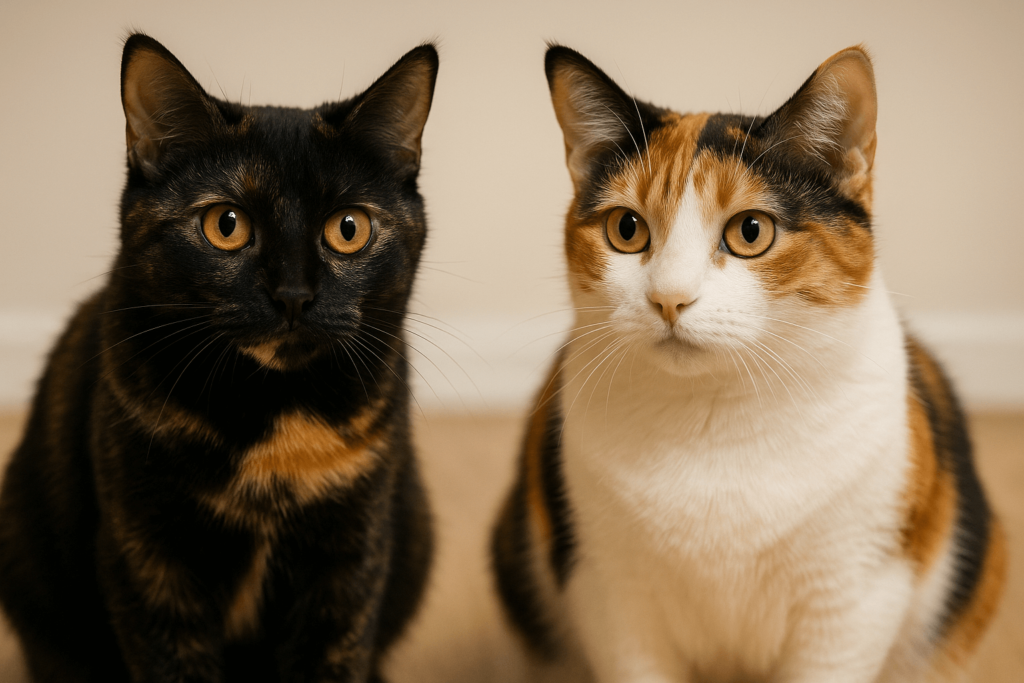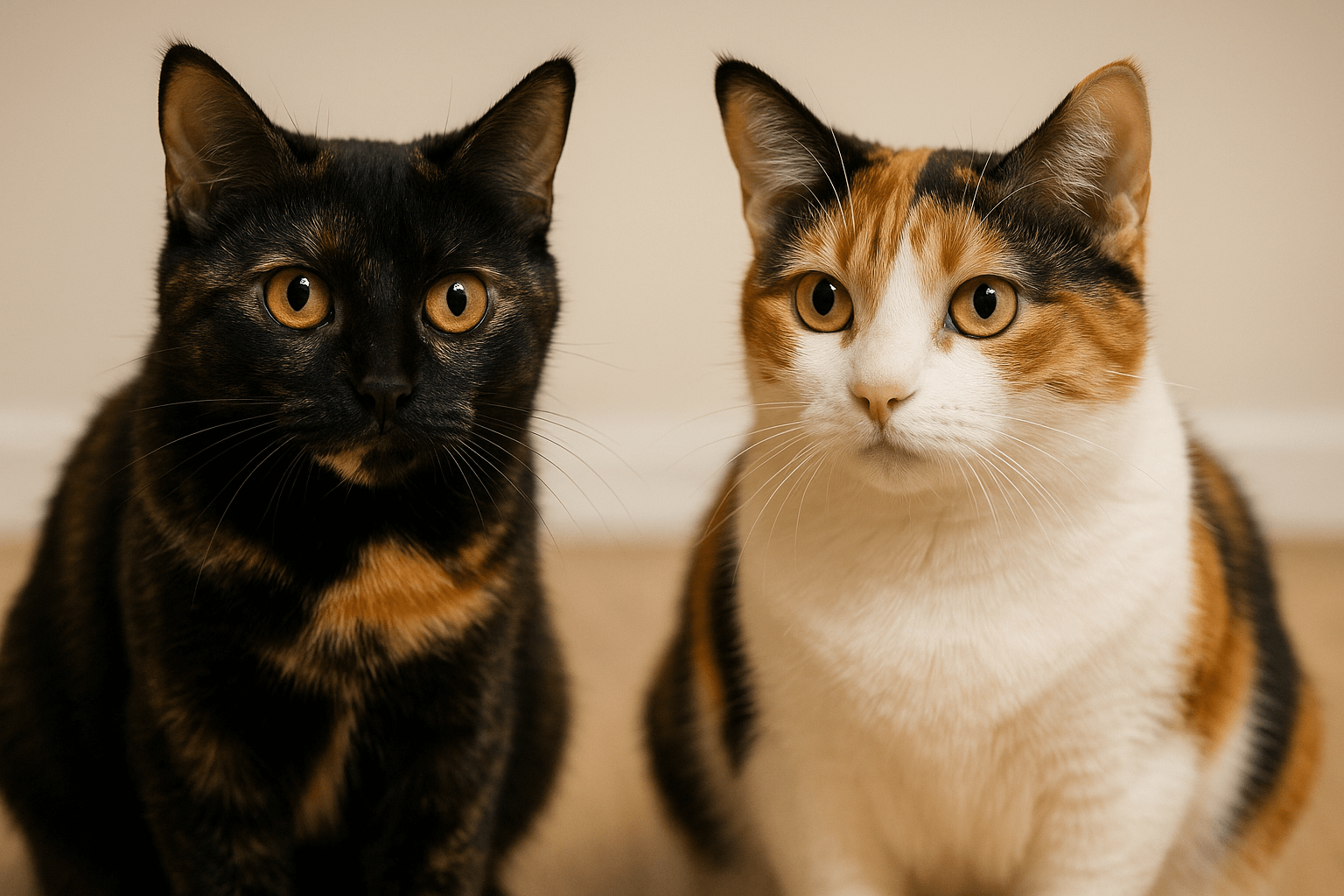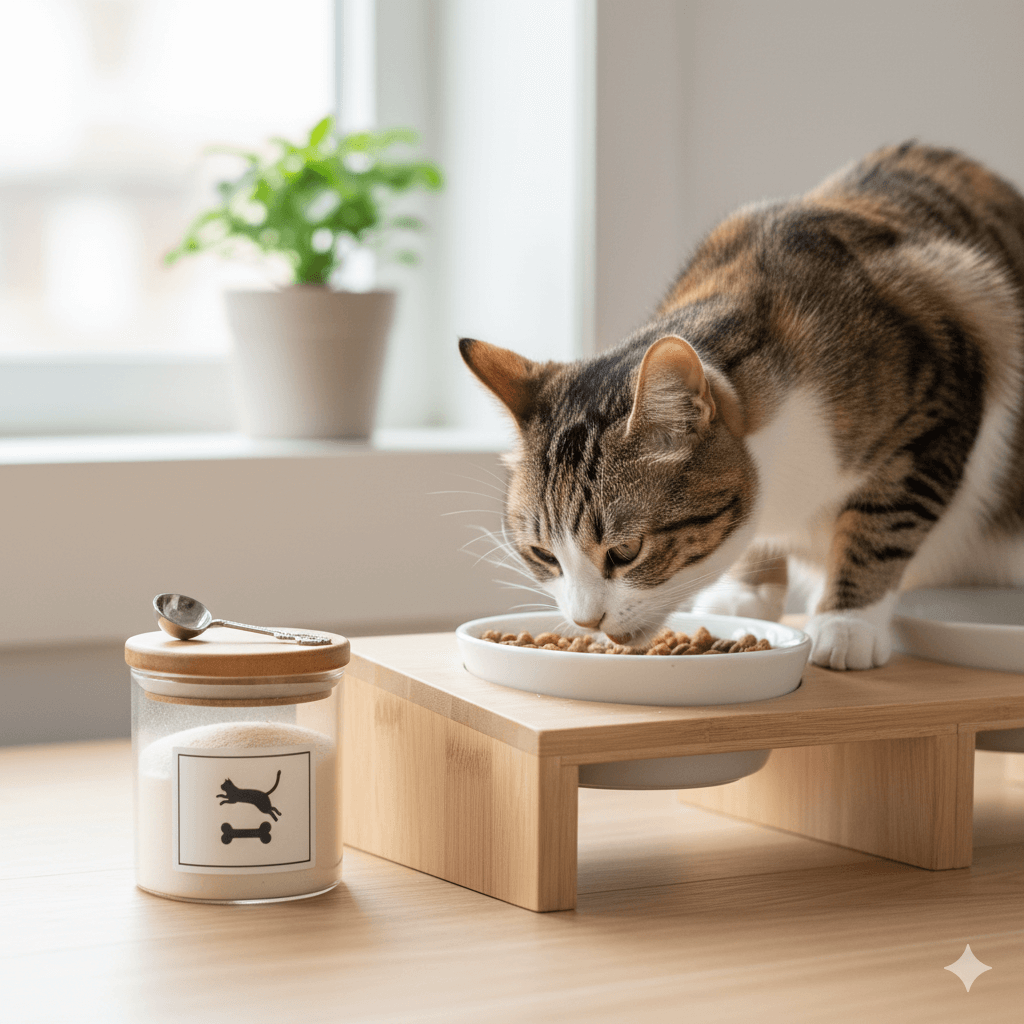Tortoiseshell Cat vs Calico: What’s the Difference?
If you’ve ever marveled at the striking coat patterns of tortoiseshell and calico cats, you’re not alone. These feline beauties are often admired for their unique and eye-catching appearances. However, while they may look similar at first glance, there are distinct differences between tortoiseshell and calico cats that go beyond their fur patterns. Understanding these differences can help you appreciate the fascinating genetics and characteristics that make each type of cat special. In this blog post, we’ll explore the distinctions between tortoiseshell and calico cats, delve into their personalities, and uncover the science behind their stunning coats.
Key Differences Between Tortoiseshell and Calico Cats
While both tortoiseshell and calico cats boast beautiful multicolored coats, their patterns and genetic makeup set them apart. Here’s a breakdown of the key differences to help you identify each type.
Coat Pattern Variations:
Tortoiseshell cats typically display a mottled pattern of black and orange (or their diluted variants like gray and cream), blending seamlessly across their fur.Distinct Patches in Calicos:
Calico cats feature bold, well-defined patches of white, black, and orange (or their diluted shades), creating a more striking contrast than tortoiseshells.Genetic Influence on Color:
Both coat patterns result from the presence of two X chromosomes, but calico cats also carry genes for white spotting, which tortoiseshells lack.Gender Differences:
Nearly all tortoiseshell and calico cats are female due to their sex-linked genetic traits. Male tortoiseshells or calicos are extremely rare and often sterile.Personality Stereotypes:
While individual personalities vary, tortoiseshell cats are often nicknamed “tortitude” for their feisty and independent nature, while calicos are sometimes described as sassy yet affectionate.
Understanding these distinctions helps clarify why tortoiseshell and calico cats are celebrated for their unique appearances and temperaments.

The Genetics Behind Tortoiseshell and Calico Coats
The mesmerizing coat patterns of tortoiseshell and calico cats are rooted in complex genetics. Here’s how science explains their one-of-a-kind looks.
Role of the X Chromosome:
The genes responsible for black and orange fur colors are located on the X chromosome. Females, who have two X chromosomes, can express both colors simultaneously.Mosaicism in Tortoiseshells:
During embryonic development, cells randomly deactivate one X chromosome, leading to a patchwork of black and orange fur in tortoiseshell cats.White Spotting Gene in Calicos:
Calico cats inherit an additional gene for white spotting, which creates areas of unpigmented fur alongside the black and orange patches.Rare Male Calicos and Tortoiseshells:
Male cats rarely exhibit tortoiseshell or calico patterns because they only have one X chromosome. When it occurs, it’s usually due to genetic anomalies like Klinefelter syndrome (XXY).No Two Patterns Are Alike:
Just like human fingerprints, no two tortoiseshell or calico cats share identical markings, making each one truly unique.
These genetic intricacies explain why tortoiseshell and calico cats captivate us with their unparalleled beauty and diversity.
Check this guide 👉Tabby Cat vs Tortoiseshell: Best 7 Expert Tips!
Check this guide 👉Himalayan Cat vs Maine Coon: Best 7 Expert Tips!
Check this guide 👉Persian Cat vs Maine Coon: Best 7 Expert Tips!
Tortoiseshell Cats | Calico Cats |
|---|---|
Mottled mix of black and orange | Bold patches of white, black, and orange |
No white spotting gene present | White spotting gene contributes to pattern |
Often nicknamed “tortitude” for feistiness | Known for sassy yet affectionate personalities |
Rarely male; almost always female | Extremely rare males due to genetic anomaly |
Unique mosaic-like appearance | High-contrast, eye-catching patterns |
Personality Traits of Tortoiseshell and Calico Cats
While every cat has its own personality, many owners report common behavioral tendencies in tortoiseshell and calico cats. These traits add charm and character to their already captivating exteriors.
Tortoiseshell Cats’ Feisty Nature:
Tortoiseshell cats are often described as spirited and independent, earning them the playful nickname “tortitude.”Calicos’ Sassy Yet Sweet Demeanor:
Calico cats tend to be confident and assertive but also enjoy showing affection to their favorite humans.Playful Energy Levels:
Both types are known for their playful antics, keeping their owners entertained with their curiosity and mischief.Strong Bonds with Owners:
Despite their occasional sassiness, tortoiseshell and calico cats often form deep attachments to their caregivers.Adaptability to New Environments:
While some may take time to adjust, most tortoiseshell and calico cats thrive in loving homes with consistent routines.
Their vibrant personalities match their colorful coats, making them cherished companions for those lucky enough to adopt them.
Caring for Tortoiseshell and Calico Cats
Caring for tortoiseshell and calico cats involves understanding their unique needs and quirks. With proper attention, these cats can live happy, healthy lives.
Regular Grooming:
Their short-haired coats require minimal grooming, but brushing helps reduce shedding and strengthens your bond.Nutritional Needs:
Feed a balanced diet tailored to their age, weight, and activity level to maintain optimal health.Veterinary Check-Ups:
Schedule routine vet visits to monitor their overall well-being, especially if they exhibit signs of stress or illness.Mental Stimulation:
Provide toys, climbing structures, and interactive playtime to satisfy their curious and energetic natures.Patience and Understanding:
Embrace their strong-willed personalities by being patient and offering plenty of positive reinforcement.
By meeting their physical and emotional needs, you’ll ensure your tortoiseshell or calico cat thrives in your care.
Health Considerations for Tortoiseshell and Calico Cats
Owning a tortoiseshell or calico cat comes with unique considerations to ensure their long-term health and happiness. Being aware of potential issues allows you to provide proactive care.
Increased Risk of Obesity:
These cats may be prone to overeating, so monitor portion sizes and encourage active playtime to prevent weight gain.Dental Health Importance:
Regular dental check-ups help prevent gum disease, which is common in many domestic cats.Rare Genetic Disorders in Males:
Male tortoiseshell and calico cats may face health challenges related to chromosomal abnormalities, requiring extra veterinary attention.Stress Management Techniques:
Provide hiding spots and calming pheromone diffusers to help manage anxiety in sensitive individuals.Senior Care Needs:
As they age, prioritize joint health supplements and regular vet exams to address age-related conditions early.
Addressing these health aspects ensures your cat enjoys a comfortable and fulfilling life.
Fun Facts About Tortoiseshell and Calico Cats
Beyond their stunning coats, tortoiseshell and calico cats have inspired folklore and cultural traditions worldwide. Here are some delightful facts about these enchanting felines.
Symbol of Good Luck:
In Japan, calico cats are considered symbols of prosperity and good fortune, often depicted in traditional maneki-neko figurines.Irish Legends:
Tortoiseshell cats were believed to bring blessings to households and protect against misfortune in ancient Celtic mythology.Unique Namesakes:
Famous tortoiseshell and calico cats include Stubbs, the honorary mayor of Talkeetna, Alaska, and Maru, a beloved internet sensation.Artistic Inspiration:
Artists throughout history have been inspired by their intricate patterns, featuring them in paintings, sculptures, and literature.Global Popularity:
Tortoiseshell and calico cats remain among the most sought-after pets globally, thanks to their striking appearances and lively personalities.
These fun facts highlight just how special these cats are beyond their physical allure.
Tips for Adopting a Tortoiseshell or Calico Cat
Considering adopting a tortoiseshell or calico cat? These tips will help you prepare for bringing home your new furry family member.
Visit Shelters First:
Many tortoiseshell and calico cats end up in shelters, so adoption gives them a second chance at a loving home.Prepare Your Home:
Create a safe, cozy space with scratching posts, toys, and hiding spots to help them acclimate quickly.Be Patient During Transition:
Allow time for your new cat to adjust to their surroundings, especially if they’re shy or nervous initially.Stock Up on Essentials:
Gather food, litter, grooming tools, and a sturdy carrier before bringing your cat home.Bond Through Play:
Use interactive toys to build trust and strengthen your connection from day one.
With thoughtful preparation, you’ll set the stage for a joyful and harmonious relationship with your new companion.
Frequently Asked Questions About Tortoiseshell and Calico Cats
Are tortoiseshell and calico cats different breeds?
No, they are coat patterns found in various cat breeds rather than specific breeds themselves.
Why do tortoiseshell cats seem so feisty?
Many owners attribute their spirited behavior to their independent nature, though individual personalities vary widely.
Can male cats be tortoiseshell or calico?
Yes, but it’s extremely rare due to the genetic anomaly required for males to display these patterns.
Do tortoiseshell and calico cats shed a lot?
Like other short-haired cats, they shed moderately, especially during seasonal changes. Regular brushing minimizes shedding.
Are tortoiseshell and calico cats good with kids?
They can be great companions for children, provided they are treated respectfully and given space when needed.
Celebrating the Beauty and Uniqueness of Tortoiseshell and Calico Cats
Tortoiseshell and calico cats are living works of art, each boasting a one-of-a-kind coat pattern and personality. Whether you’re drawn to the subtle elegance of a tortoiseshell or the bold vibrancy of a calico, these cats bring joy, charm, and endless fascination to any household. By understanding their differences, appreciating their quirks, and providing loving care, you can create a lifelong bond with these extraordinary felines. Whether you call them “torties,” “calicos,” or simply your best friend, these cats remind us that beauty comes in many forms—and sometimes, it wears fur.
Understanding Bone Supplement for Cats: Best 7 Expert Tips! – Safe, vet-approved guidance for strong feline bones & balanced nutrition.
Bone Supplement for Dogs: Best 7 Expert Tips! – Expert guide to calcium, collagen & bone health for every life stage.
Understanding Can Cats Get Sunburn: Best 7 Expert Tips! – Protect your feline from UV damage with vet-backed prevention strategies.
How to Train a Seizure Alert Dog: Best 7 Expert Tips! – Learn expert-backed steps to nurture natural instincts into reliable, life-saving seizure alerts.





